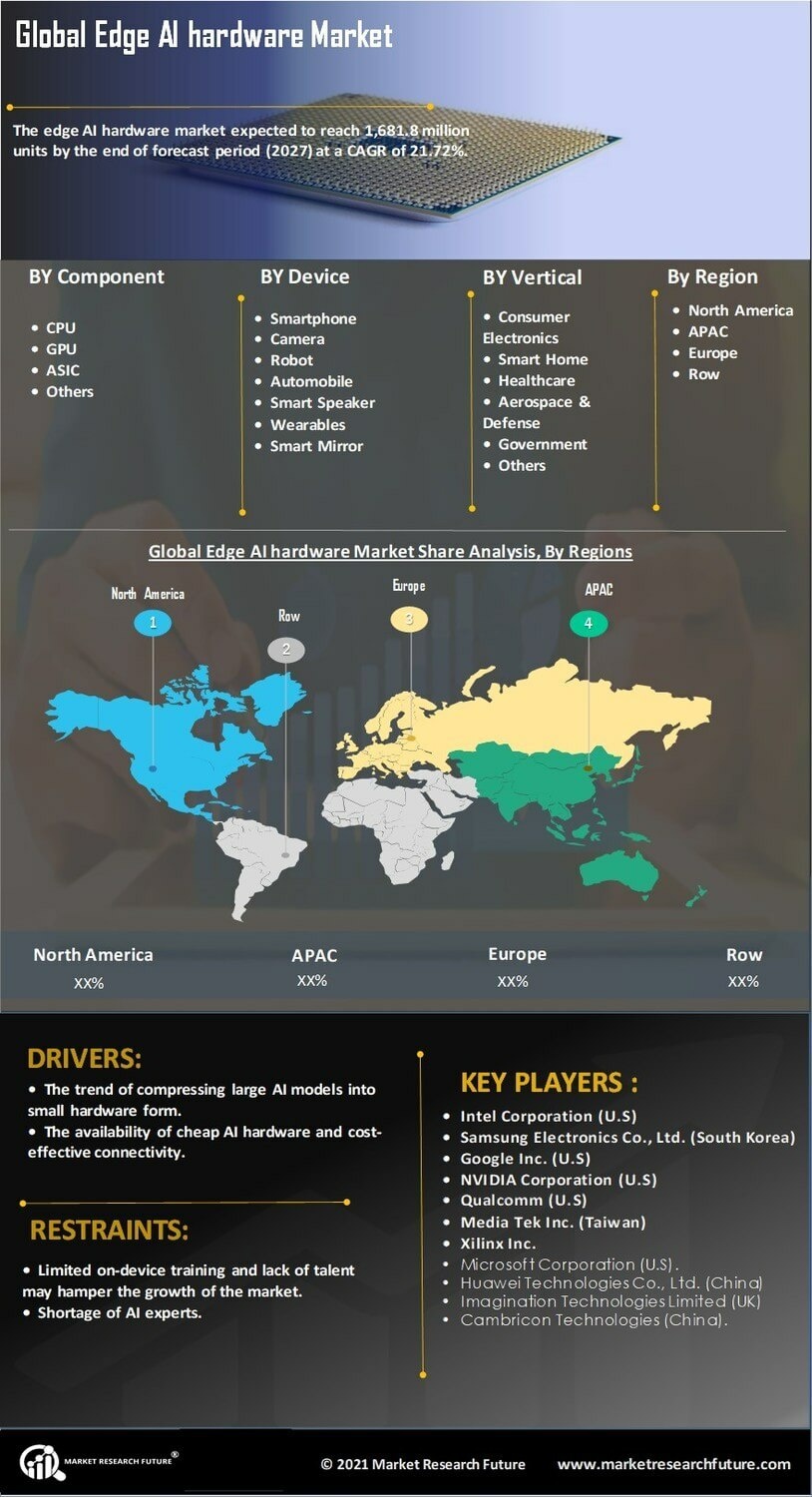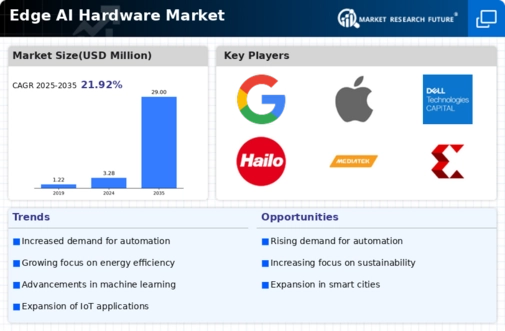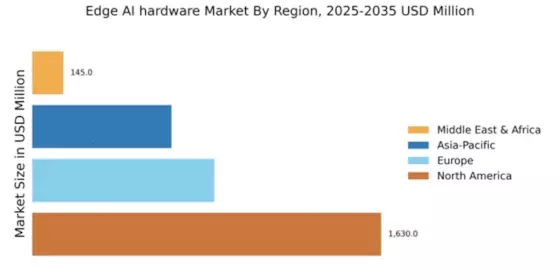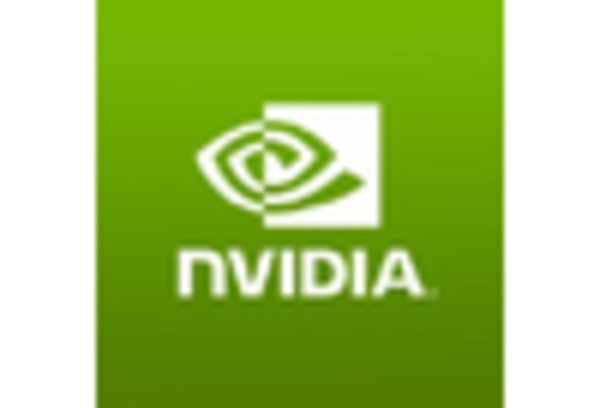Market Growth Projections
The Global Edge AI Hardware Market Industry is projected to experience substantial growth over the coming years. The market is expected to reach 3.28 USD Billion in 2024, with a remarkable increase to 29.0 USD Billion by 2035. This growth trajectory indicates a compound annual growth rate of 21.92% from 2025 to 2035. Such projections reflect the increasing integration of edge AI solutions across various sectors, driven by advancements in technology and the rising demand for efficient data processing. The market's expansion underscores the vital role of edge AI hardware in shaping the future of digital transformation.
Emergence of 5G Technology
The rollout of 5G technology is poised to revolutionize the Global Edge AI Hardware Market Industry. With its high-speed connectivity and low latency, 5G enables more efficient data transfer between edge devices and cloud services. This advancement facilitates the deployment of AI applications that require real-time processing, such as autonomous vehicles and smart manufacturing systems. The synergy between 5G and edge AI hardware is likely to drive market expansion, as organizations seek to harness the capabilities of both technologies. The anticipated growth trajectory suggests a promising future for edge AI solutions in a 5G-enabled landscape.
Increased Adoption of IoT Devices
The proliferation of Internet of Things (IoT) devices significantly influences the Global Edge AI Hardware Market Industry. As more devices become interconnected, the demand for edge AI solutions that can process data locally becomes paramount. This shift not only enhances data security but also reduces bandwidth costs associated with cloud computing. Industries such as smart cities and industrial automation are particularly benefiting from this trend. The market is anticipated to grow at a compound annual growth rate of 21.92% from 2025 to 2035, indicating a robust future driven by the integration of edge AI hardware with IoT ecosystems.
Growing Focus on Data Privacy and Security
Data privacy and security concerns are increasingly shaping the Global Edge AI Hardware Market Industry. With the rise in data breaches and regulatory scrutiny, organizations are prioritizing solutions that ensure data protection at the edge. Edge AI hardware Market allows for localized data processing, minimizing the risk of exposure during transmission to centralized servers. This trend is particularly relevant in sectors such as finance and healthcare, where sensitive information is handled. As businesses adopt edge AI solutions to enhance their security posture, the market is expected to witness substantial growth, further emphasizing the need for robust hardware solutions.
Rising Demand for Real-Time Data Processing
The Global Edge AI Hardware Market Industry experiences a notable surge in demand for real-time data processing. This trend is driven by the increasing need for instantaneous decision-making across various sectors, including healthcare, automotive, and manufacturing. For instance, edge AI devices facilitate rapid data analysis at the source, reducing latency and enhancing operational efficiency. As organizations seek to leverage data for competitive advantage, the market is projected to reach 3.28 USD Billion in 2024, reflecting a significant shift towards decentralized computing. This transformation underscores the importance of edge AI hardware in meeting the evolving needs of businesses globally.
Advancements in AI Algorithms and Machine Learning
Advancements in artificial intelligence algorithms and machine learning techniques are pivotal in propelling the Global Edge AI Hardware Market Industry forward. Enhanced algorithms enable more efficient processing and analysis of data at the edge, leading to improved performance and accuracy. For example, the integration of deep learning models in edge devices allows for sophisticated applications such as facial recognition and predictive maintenance. As these technologies evolve, they are expected to drive the market's growth, with projections indicating a rise to 29.0 USD Billion by 2035. This growth highlights the critical role of innovative AI methodologies in shaping the future of edge AI hardware.
















